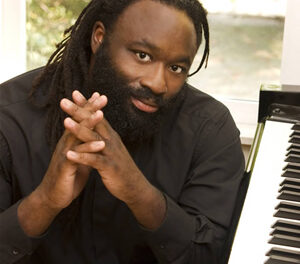Under guest conductor Stephen Mulligan, the Winston-Salem Symphony delivered an outstanding concert Saturday night at the Stevens Center in the heart of downtown. Featuring esteemed jazz and classical saxophonist Branford Marsalis, this “All-American” concert appealed to audiences of all tastes. Mulligan said it best when he commented that the Winston-Salem Symphony has equal love for the classics and the contemporary. With love for both sides of the same coin, the WSS was able to take a concert that can often be presented as monolithic and instead imbue it with nuance and complexity.
Carrying all the candid optimism and novel pleasure of a Parisian excursion, the first piece on the program was Gershwin’s ever classic An American in Paris. I’ve heard this piece I don’t know how many times, but WSS really played it with something special. Every note was as silly, innocent, and eager as Gershwin intended. Bringing out the iconic taxi horns and jubilant timpani rolls, the percussion section’s performance was especially enjoyable. And with a generous sweep of a final gesture, Mulligan really brought out some electricity from the ensemble in the final notes! I’m sure for many in the audience, this was their favorite piece on the program.
Compared to the Gershwin, the John Adams‘ Saxophone Concerto is nothing short of a rhythmic behemoth. The sheer level of coordination required by the soloist, the conductor, and the ensemble was just extraordinary. Featured soloist Marsalis shone bright alongside Mulligan as they fluctuated between meters and moods and did so with confidence, clarity, and poise. Marsalis’ velvety tone on the alto saxophone stayed warm and inviting throughout despite the challenging technique. As demanding as it was, the whole ensemble worked together diligently and created a performance that was coy, dizzying, dreamy, and scintillating. Nearly equal in length to the final work on the program, the Winston-Salem Symphony demonstrated how committed they are to engaging audiences with music from living composers.
After the intense saxophone concerto, William Grant Still‘s Symphony No. 4 “Autochthonous” was a much-welcomed return to familiar territory. The bluesy clarinet solos, the carefree, toe-tapping walking bass lines, and the touching, spiritual-inspired melodies were refreshing, meaningful, and simply enjoyable. While there were many moments that were light-hearted, the depth of sound from the string sections colored the symphony with an appropriate amount of severity. As ensembles around the country are popularizing Still’s music, his Symphony No. 1 (“Afro-American”) is a quick choice for organizations looking to diversify their repertoire. The first symphony is phenomenal, but I think WSS struck that sense of nuance and complexity by going with Symphony No. 4 as the culminating work. The subtitle “Autochthonous” literally means indigenous, rather than descended from migrant or colonist, and curiously Still intended for the title to represent the spirit of the American people. However, Still’s own daughter believes that the title is meant to honor the enslaved men and women who literally worked the soils of America. Jazz, spirituals, and popular music aside, the ambiguity of interpreting the work alone is a facet that accentuates the tangled nature of American society. As knotted as our society is, the hymn-like final movement left the audience with a resounding sense of optimism.
Much like I enjoy listening to an artist who is able to cultivate a story through a full-length album, I love concerts where the program is cohesive, holistic, and the meaning of each piece is influenced by and influencing the other works. WSS showed their skill at taking audiences through such immersive, engaging, and relevant musical journeys. From their first notes of the evening, the musicians were ready to make the most of our attention. As the concert began and I waited to hear the cartoonish sounds of Gershwin, I was surprised that the ensemble’s first notes were so stately and patriotic. I was certain that it wasn’t Gershwin, but I couldn’t guess the title or even composer of the piece. It wasn’t until the stage was lit with the blue and yellow of the Ukrainian flag that the audience and I fully understood. Without any self-aggrandizing pomp, the Winston-Salem Symphony was able to present us a concert that was relatable, challenging, and most importantly, relevant!











